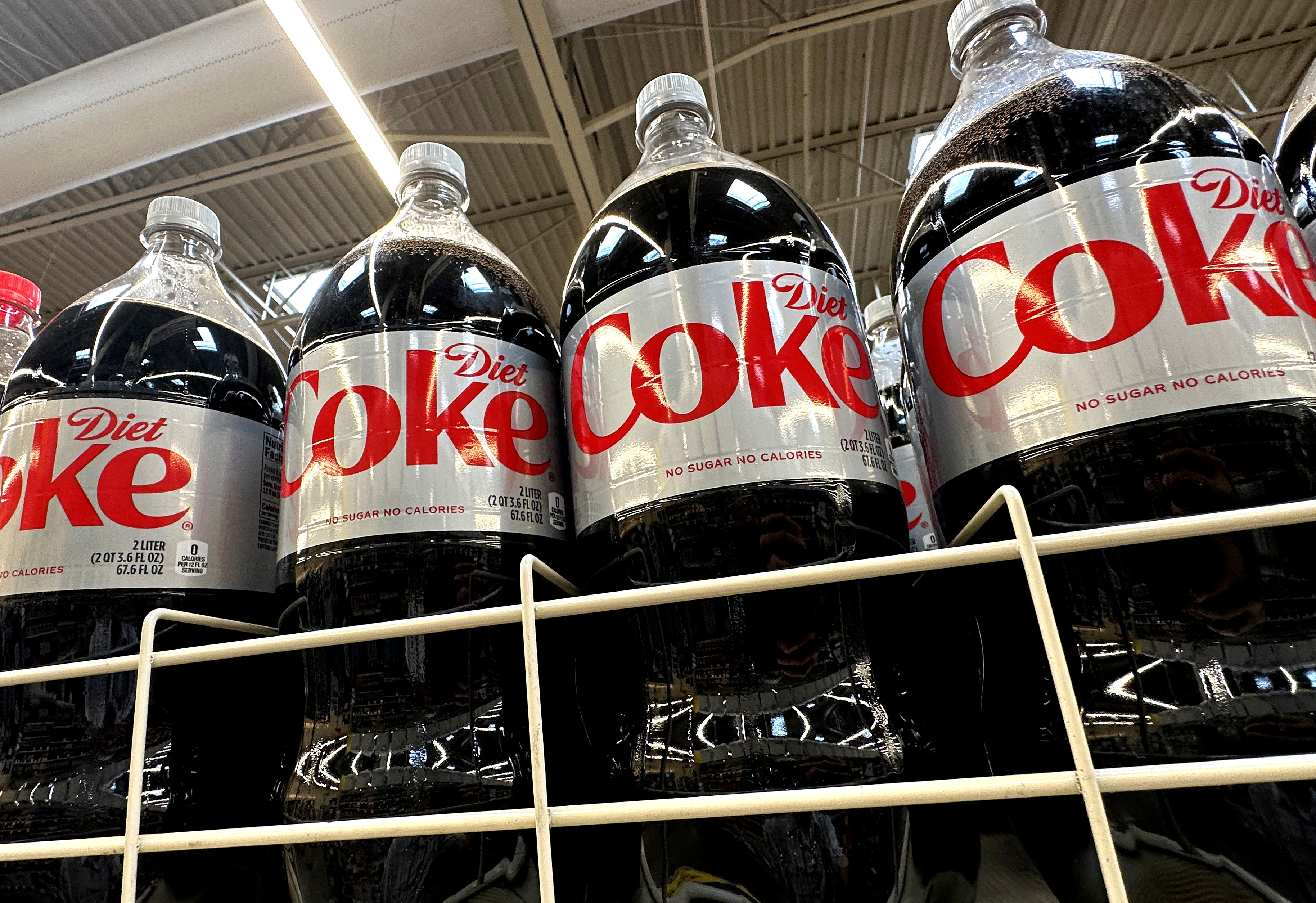Agents and substances categorized as carcinogenic to humans
[1/2]Bottles of Diet Coke are seen on display at a market in New York City, New York, U.S., June 28, 2023. REUTERS/Mike Segar Purchase Licensing Rights
July 13 (Reuters) - Aspartame, the artificial sweetener used in products from Coca-Cola's diet sodas to Mars' Extra chewing gum, is the latest substance to be declared a possible carcinogen by the International Agency for Research on Cancer (IARC).
Carcinogens are substances that have the potential to cause cancer to humans. According to the IARC, there are four different levels of classifications - carcinogenic, probably carcinogenic, possibly carcinogenic and not classifiable.
The levels are based on the strength of the evidence, rather than how dangerous a substance is.
Here is a look at some of the top agents that are carcinogenic to humans based on their classifications:
CATEGORY-1: WHEN AN AGENT IS CONSIDERED "CARCINOGENIC TO HUMANS"
As per IARC, this classification is used when there is enough proof that the agent causes cancer in people. Typically, the assessment is based on epidemiological study findings that humans exposed to the substance acquire cancer.
Major substances and agents in this category:
CATEGORY-2: WHEN AN AGENT IS CONSIDERED "PROBABLY CARCINOGENIC TO HUMANS"
This classification is used when there is limited or inadequate evidence of "carcinogenicity in humans" and there is either more evidence showing they cause cancer in animals, or strong evidence showing that they have similar characteristics to other human carcinogens.
Major substances and agents in this category:
CATEGORY-3: WHEN AN AGENT IS CONSIDERED "POSSIBLY CARCINOGENIC TO HUMANS"
This classification is generally used when either there is limited evidence of "carcinogenicity in humans", sufficient evidence in animals, or strong evidence showing that the agent exhibits key characteristics of human carcinogens.
Major substances and agents in this category:
CATEGORY-4: WHEN AN AGENT IS "NOT CLASSIFIABLE AS TO ITS CARCINOGENICITY TO HUMANS"
This classification is used when evidence of carcinogenicity in humans is inadequate. According to IARC, this includes drinking coffee, personal use of hair coloring products, use of fluorescent lighting, chlorinated drinking water, highly-refined mineral oils, tea and printing inks.
Source: IARC, World Health Organization
Sign up here.
Reporting by Granth Vanaik in Bengaluru, Editing by Deepa Babington and Catherine Evans
Our Standards: The Thomson Reuters Trust Principles.

